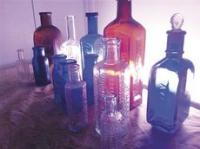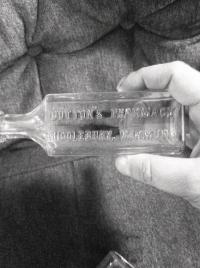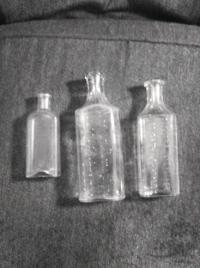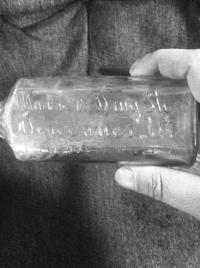Main Sections
Front Page
SportsValley VitalsIt's in the StarsStarwiseArchivesLinksAbout The VoiceContact Us
|
Looking At History Through Collecting Bottles

photo by provided |
| 
photo by provided |
| 
photo by provided |
| 
photo by provided |
|
Tuesday January 3, 2017
By Cookie Steponaitis
Darren Pidgeon was just fifteen years old when he spent a weekend with his uncle and became a student of history. His uncle had lost his eyesight to Diabetes but had dug up and collected bottles in his younger days. Pidgeon came into his home and was struck by the shades of cobalt blue in some of the collection and was hooked. Since his uncle could no longer see the guides and keep track of his collection or read articles on new sites to dig, the pair formed an incredible bond and partnership. “I loved the molds and the crudeness of how they were made and the art, skill and bubbles that were a part of each,” remarked Pidgeon. “I not only fell in love with history, but fell in love with a period of time and a way to learn about them through collecting bottles. Things were incredibly tough back then and you could see through the bottles the diseases they were facing and the cures that were available at the time. Each bottle tells a different story.”
While Pidgeon feels you can find these antique bottles in many different places, he does point out some steadfast lessons of history. “You can go where people would gather in the 1800’s and because bottles were in all homes you can guarantee that besides death and taxes, all early homes had garbage. That garbage would often be on the backside of a stone wall or even buried in the dirt floor of a basement. It was in the 1870’s when trash really became a problem and towns required a dump,” explained historian Pidgeon. Some of Pidgeon’s favorite bottles came from local dumps and he found that the bottles would also tell stories of how people lived and what they valued for consumption. “They showed you what they drank for liquor, milk or in the treatment of illness,” explained Darren Pidgeon. “You could also tell about the finances and money of the town due to the amount of embossed bottles or plain bottles with a paper label.” Pidgeon also learned that prior to 1909 any medicine could claim the word ‘cure’ on its label with no need of proof. The main ingredients of the time were mostly alcohol and opium and the companies were not really curing the ailment but just hiding the symptoms. This change occurred in 1909 with the Food & Drug Administration and is visible on the bottles used by the Warner’s Safe Liver & Kidney Remedy which was sold from both Rochester and across the sea in London. The original label calls it a cure and the change in labeling coincides with the arrival of laws and monitoring by the federal government.
Pidgeon shares some of his collection and findings on the Facebook site “Growing Up in Addison County” which shows some of his favorite Addison County finds including Dutton’s Pharmacy in Middlebury, Vermont (circa 1909), Warner’s Pharmacy in Vergennes (circa 1900), and Dr. Ingham Cure (Vergennes, Vermont 1860). “I’m never ending my search for Vermont bottles,” concluded Darren Pidgeon on his Facebook post. While Pidgeon has no plans to stop he is in fact worried about the future of his bottle digging and saving with the amount of renovations and constructions going on the older properties in the area. But never fear, if there is a spot Pidgeon will find it and with care he will dig, find and see that more bottles can be a part of the history and stories of this town. “I could go on for days about bottles and history,” grinned Pidgeon. “After all you can’t have history without a story and bottles are a great way to look into the past and learn the story.”
|
Advertisements
Search our Archives
|






 Printer Friendly
Printer Friendly